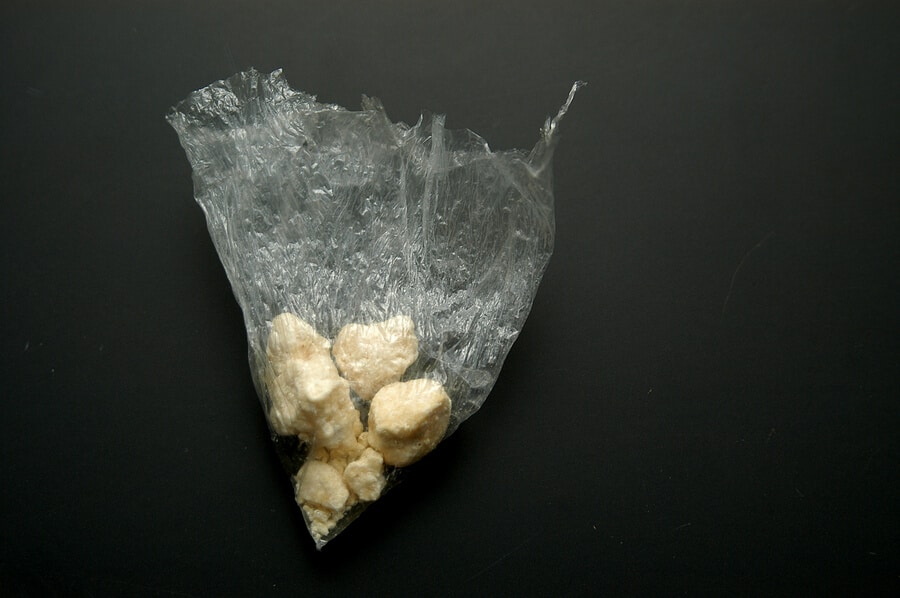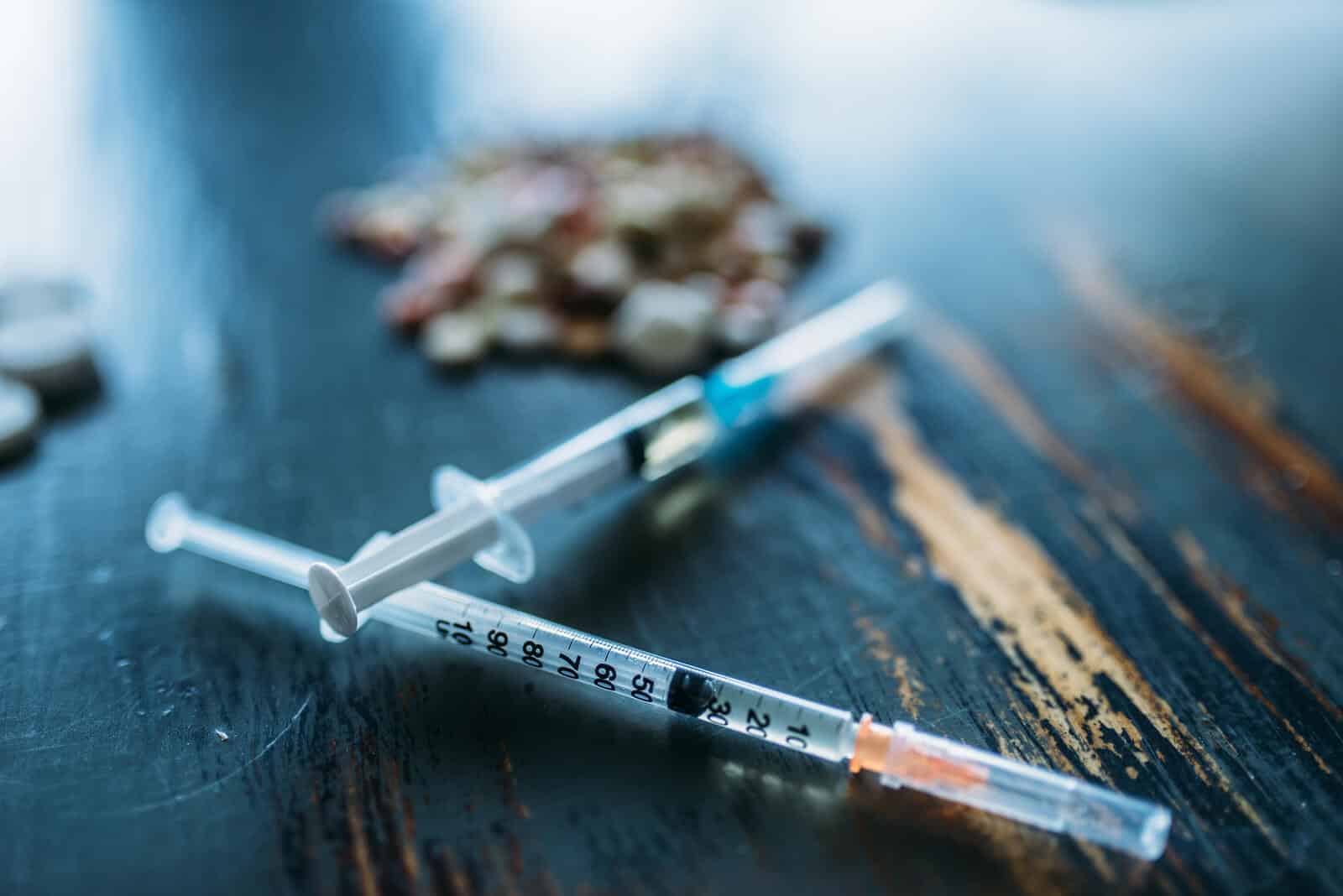
Crack is a stimulant drug that is the freebase form of cocaine – meaning that it can be inhaled or smoked. It presents as irregular white chunks of various sizes. Although the drug itself doesn’t have a distinct smell, the method it’s used typically produces a burning or smokey odor.
Crack’s popularity is largely due to its appeal for drug users seeking an inexpensive, powerful, fast-acting high. The term “crack” comes from the sound that is produced by the burning rock-shaped chunks.
Other names for the substance include:
- Rocks
- Nuggets
- Jelly beans
- Gravel
- Dice
- Candy or Cookies
- Base
As a potent stimulant, crack use can invoke a rapid, euphoric high. It increases the speed of various mental and physical processes, serving to boost energy and give the user a sense of control. As a smoked form of cocaine, crack use results in nearly instantaneous effects because the drug is breathed into the lungs where it is then rapidly absorbed into the bloodstream.
The effects peak quickly and subside after less than 20 minutes. Because the high is so brief, users often abuse in a binge and crash cycle that heightens the risk of dependence, tolerance, and addiction.
Why Do People Abuse Crack?
Those who abuse crack do so to achieve the following effects:
- An intense feeling of euphoria
- Inflated sense of self and increased self-importance
- Increased alertness and hyperactivity/stimulation
- Decreased appetite
As with other intoxicating substances, with regular use, the desired effects are quickly taken over by adverse symptoms.
What Is Crack Cocaine? Signs and Symptoms
Crack is a very dangerous and potentially life-threatening drug.
It’s unlikely that a person can use crack cocaine recreationally for any significant length of time, due to its addictive nature. Moreover, any use of crack should be taken seriously.
Crack is addictive due to the intense euphoric rush it produces but fades quickly, leaving the user wanting more. When the high subsides, the user feels a strong desire to smoke more crack because he or she enters withdrawal and becomes agitated, restless, paranoid, or anxious.
Physical signs of crack use include:
- Dilated pupils
- Reduced sleep or insomnia
- Increased heart rate
- Hypertension (high blood pressure)
- Suppressed appetite and weight loss
- Muscle twitching
- Nosebleeds
Psychological signs may manifest that indicate a person is abusing crack cocaine. These signs may include the following:
- Aggression and mood swings.
- Psychotic symptoms, including hallucinations and paranoia.
- Persistent thoughts about obtaining and using crack/strong cravings.
- Inability to stop using despite a desire to do so.
- Smoking crack at the expense of finances, relationships, and other important aspects of life.
Tolerance and Withdrawal
Someone who regularly engages in crack use can quickly build a tolerance to the drug. Tolerance occurs when the body grows accustomed to the presence of crack the system and requires an increasing amount to achieve the same effect. If a person is not satisfied with a small amount of crack and feels a need for larger and larger amounts, he or she has developed a tolerance.
Once tolerance has manifested, addiction may follow soon after, and the person may begin to engage in risky, dangerous, or problematic behaviors in order to obtain and use the substance. In the throes of an addiction, the person will likely become much less rational and logical.
The occurrence of withdrawal symptoms is another sign of crack use. As tolerance develops, a physical or chemical dependence may also develop, meaning the brain comes to heavily rely on the drug and adapted to its presence.
Without it, the person may suffer from withdrawal symptoms such as the following:
- Depression.
- Increased anxiety.
- Irritability and agitation.
- Strong cravings for more crack.
Risks of Crack Abuse
Those who abuse crack often put themselves and others in harm’s way due to dangerous and compulsive drug seeking behaviors. Crack abusers may engage in the following:
Risky Sexual Behaviors
Crack use increases sexual desire and reduces inhibitions. Those high on crack could be more likely to engage in sex with multiple partners and to have unprotected sex. In addition, some may exchange sex for the drug.
Violent Tendencies
Crack cocaine use intensifies emotions, including agitation and anger. People who are high on crack may be more violent toward others or may harm themselves intentionally or accidentally.
Engaging in Risky Behavior to Obtain and Use Crack
Crack users often enter unsafe areas or agree to do risky things to obtain the drug. Crack addiction can be a very powerful motivator, and many individuals entrapped by it are willing to do nearly anything in exchange for some more of the substance.
Neglect of Responsibilities
People in active crack addiction often prioritize drug use over responsibilities such as paying bills, attending work or school, maintaining relationships with family members, or even caring for children.
Law Breaking
Many addicted to crack steal to help support their habit. They also may commit robberies or participate in other illegal activity to obtain the money needed to buy crack. Crack possession itself is also illegal, so some face legal trouble for possessing it even if they don’t engage in these behaviors.
Effects of Crack Abuse
In both the short- and long-term, crack use can result in a number of side effects that can substantially compromise one’s health.
Short-term risks of crack use include:
- Cardiovascular risks including increased heart rate, blood pressure, and body temperature.
- Higher breathing rates.
- Nausea.
- Odd or bizarre behaviors, delusional behavior or paranoia.
- Anxiety and panic.
The above adverse effects can occur after only one use at a high dose.
Crack’s Long-Term Effects
Long-term effects can occur after a prolonged period of consistent abuse. These include:
- Chronic cardiovascular issues that may include heart disease, cardiac arrest, and stroke.
- Malnutrition due in part to significant weight loss.
- Marked cognitive decline.
- Confusion and delirium.
- Psychosis and hallucinations.
- Damage to the lips, mouth, and teeth.
- Major depression, anxiety, and irritability.
- Seizures.
Treatment For Crack Cocaine
Treatment for crack abuse often begins with a detox – a supervised, controlled withdrawal usually performed at a detox center. Medical staff monitor patients for severe physical symptoms of withdrawal and help manage intense psychological effects such as mood swings, agitation, anxiety, and depression during this period.
After detox is complete, many patients transition to a rehab center such as Harmony Treatment and Wellness for residential or partial hospitalization programs. Treatment then largely focuses on the psychological aspects of addiction, and patients receive individual and group therapy and may attend ongoing support groups.
An inpatient or residential rehab stay is often followed by outpatient treatment and a period of ongoing aftercare, in which patients begin to return to their daily lives but also continue to visit the center regularly to undergo continuing therapy and other needed treatment. Some patients transition back to their regular lives while they reside in a halfway house or sober living facility.
We ensure our patients receive the support that they need through the entire recovery process to achieve long-lasting sobriety, and therefore, provides aftercare planning services that serve to find local resources for former patients after treatment has been completed.
You can regain the life you deserve, full of happiness and wellness – and we can help!
